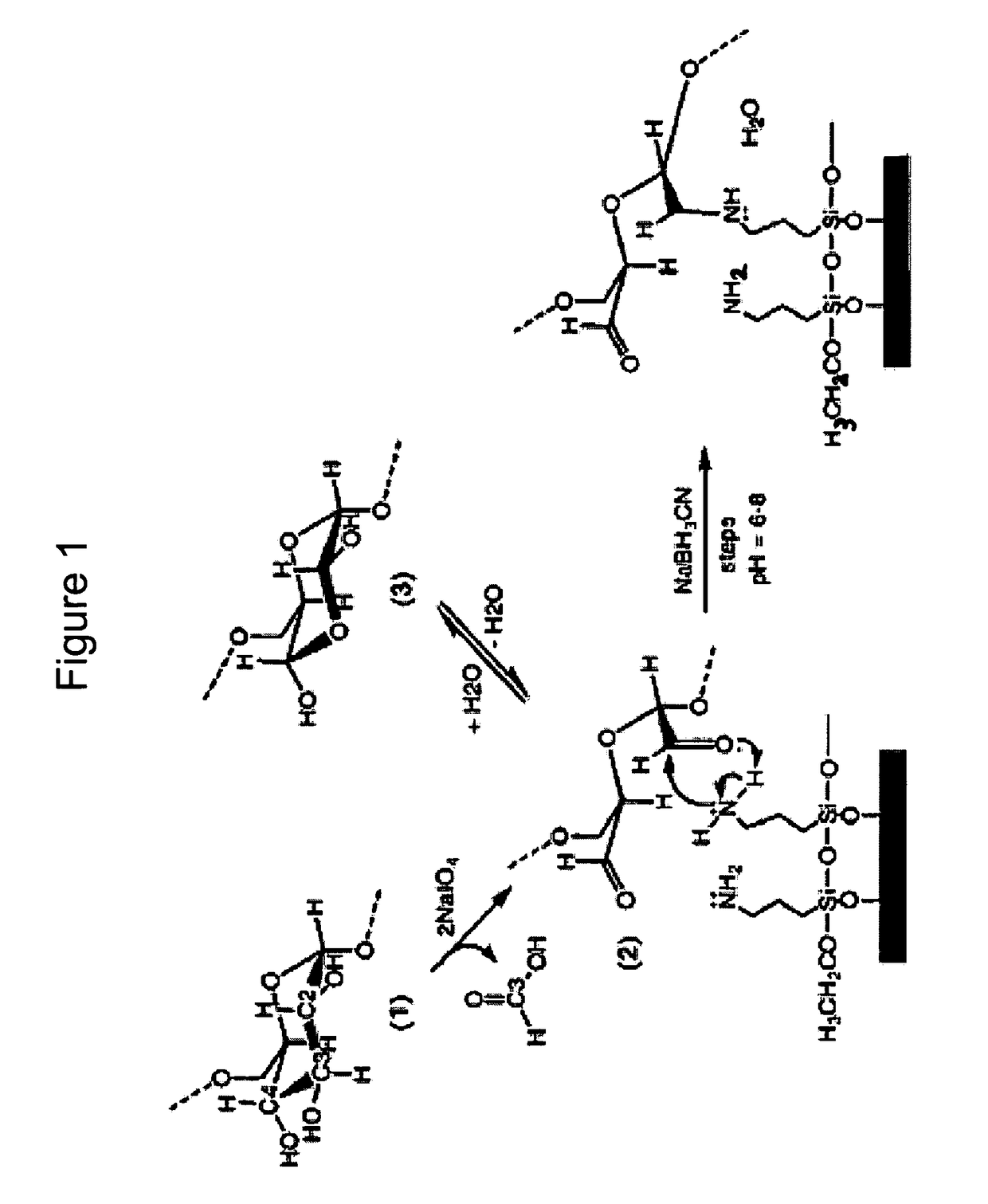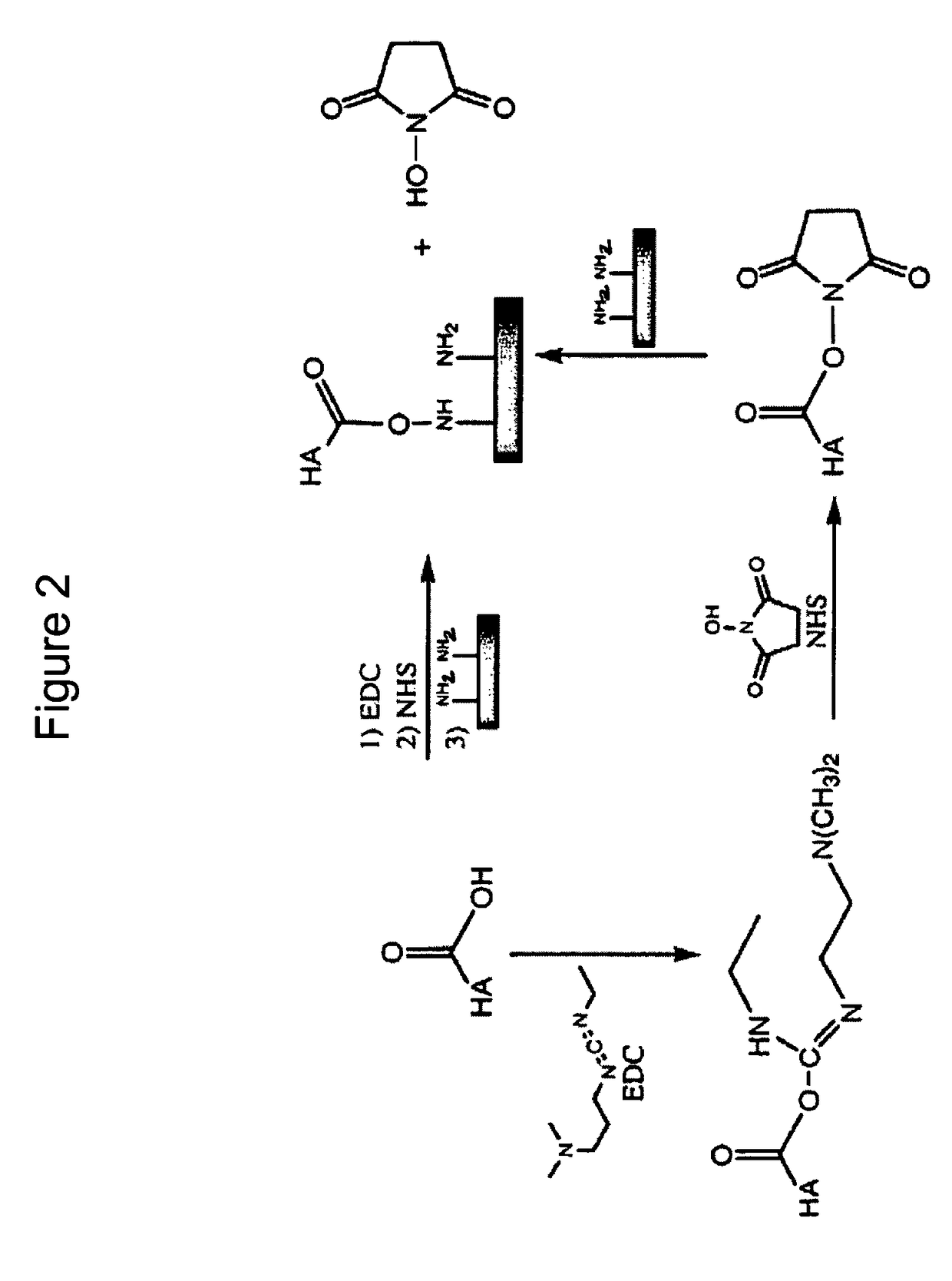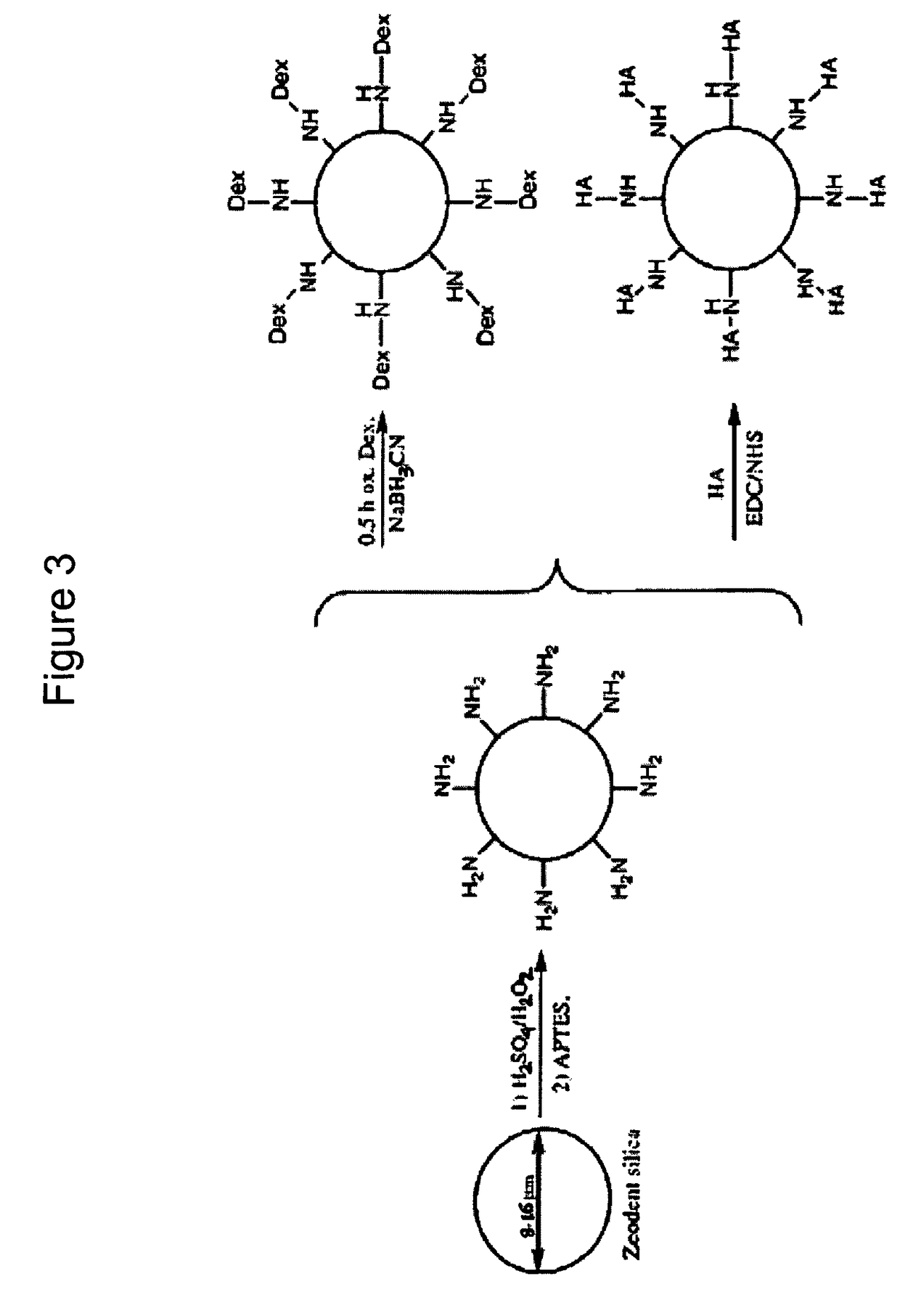Particles that disrupt or impede bacterial adhesion, related compositions and methods
a technology of particle and bacterial adhesion, applied in the direction of powder delivery, dental care, pharmaceutical delivery mechanism, etc., can solve the problems of tooth decay process that has been the subject of intense scrutiny, and achieve the effect of inhibiting or reducing the formation of plaqu
- Summary
- Abstract
- Description
- Claims
- Application Information
AI Technical Summary
Benefits of technology
Problems solved by technology
Method used
Image
Examples
example 1
Pretreatment of Particles to Add Tethered Amine Groups
[0070]SiO2 (ZEODENT® silica, 8-16 μm average diameter particles, available from J.M Huber Corp., Edison, N.J., USA) are etched clean with a strongly oxidizing solution of H2SO4 / H2O2 (75% / 25% v / v). Next, the SiO2 is modified by deposition of 3-aminopropyltriethoxysilane (APTES). Although solution deposition is preferred, vapor deposition may be substituted therefor. The vapor deposition route utilizes strict anhydrous conditions, as may be afforded, e.g., by a dry glove box, in order to avoid unwanted hydrolysis reactions. Solution deposition under acidic conditions provides a more widely applicable procedure. In this approach SiO2 is dispersed in distilled H2O and the pH of the resulting solution is adjusted to an approximate pH value of 6.5 with HNO3. The suspension is then stirred for 1 hour, after which time 1 mL of APTES is added, and the suspension stirred again. After 24 hours of stirring, the excess APTES is removed by fil...
example 2
Preparation of Particles Conjugated to Polysaccharide Gum
[0071]The microbial gum, dextran, is covalently attached to amino-modified particle cores prepared according to Example 1, i.e. APTES-modified SiO2 particles (hereinafter SiO2+APTES). The polysaccharide is first pre-treated to provide carbonyl groups thereon. As shown in FIG. 1, the dextran is treated with sodium periodate (NaIO4) to oxidize the saccharide ring(s), forming aldehyde carbonyl groups and releasing formic acid. The product of the oxidation reaction is the dialdehyde corresponding to (2). The surface bound APTES is able to reductively aminate (2) to form a Schiff base (structure not shown), which is reduced by sodium cyanoborohydrate (NaBH3CN) to form a stable secondary amine linkage. Since the extent of dextran oxidation controls the amount of (2) produced, it also controls the grafting density (i.e. number of bonds) between dextran and the SiO2+APTES. In order to optimize the dextran grafting density, a variety o...
example 3
Preparation of Particles Conjugated to Glycosaminoglycan
[0072]Hyaluronate (HA) is covalently grafted to hereinafter SiO2+APTES particles, prepared as in Example 1. Since HA has a carboxylate functionality, no modification is necessary prior to grafting. Covalent attachment of hyaluronate to SiO2+APTES is achieved by N-ethyl-N′-(3-dimethylaminopropyl)carbodiimide(EDC) / N-hydroxysuccinimide (NHS) coupling chemistry (see FIG. 2). The grafting density of hyaluronate on SiO2+APTES is controlled by varying the EDC / NHS ratio.
[0073]Note that, for HA, periodate chemistry, such as described in Example 2, can alternatively be used to form aldehyde carbonyl groups to produce an HA derivative that can be covalently attached to a particle core by reaction involving such carbonyl groups. Similarly, polymers having primary amine groups, hydroxyl groups, or acid (or ester or amide) groups can be covalently attached to a raw or derivatized particle core by reaction involving any one or more of those c...
PUM
| Property | Measurement | Unit |
|---|---|---|
| size | aaaaa | aaaaa |
| diameter | aaaaa | aaaaa |
| diameter | aaaaa | aaaaa |
Abstract
Description
Claims
Application Information
 Login to View More
Login to View More - R&D
- Intellectual Property
- Life Sciences
- Materials
- Tech Scout
- Unparalleled Data Quality
- Higher Quality Content
- 60% Fewer Hallucinations
Browse by: Latest US Patents, China's latest patents, Technical Efficacy Thesaurus, Application Domain, Technology Topic, Popular Technical Reports.
© 2025 PatSnap. All rights reserved.Legal|Privacy policy|Modern Slavery Act Transparency Statement|Sitemap|About US| Contact US: help@patsnap.com



